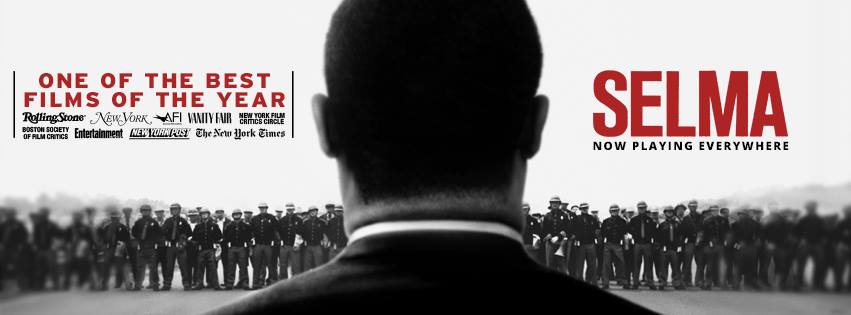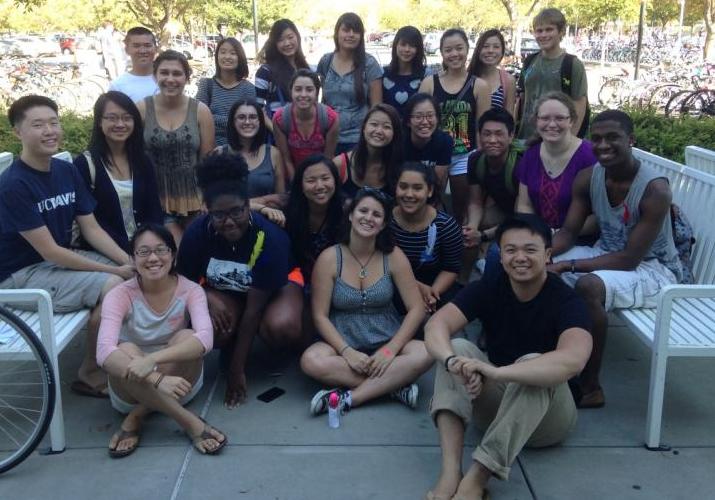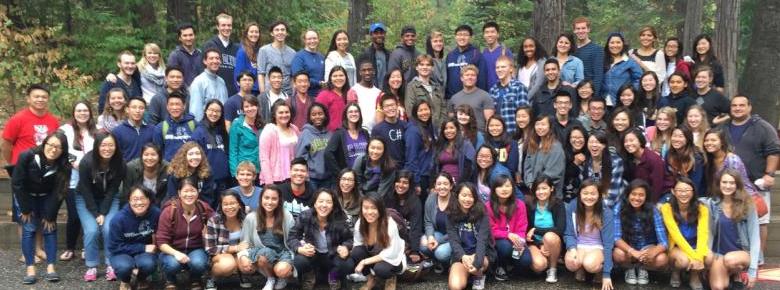
Selma has been hailed as one of the best movies of the year, with an incredible 99% rating on Rotten Tomatoes and landing on just about every film critic's Top 10 lists. But it is also affords us with a simple yet profound opportunity to engage deeply in the ministry of reconciliation.
Stephanie Cheung, an InterVarsity Campus Staff Member at UC Davis, led a diverse group of students in a time of prayer and discussion after watching Selma and offers some tips for leading a Selma movie discussion.
How did you structure the discussion?
- Group Reflection: First, I invited the group into 5 minutes of silent personal reflection, with the hope for all of us to intentionally sit with our raw emotions and reflect on what was happening. (We started this time on our walks from the theater back to the car.)
- Prayer: Once we were all sitting in the car, I opened our time by praying for our space and conversation.
- Leader Models Sharing: I shared about why I asked for silent reflection time, why I thought it was important, and what I wanted this space to be for all of us. I then proceeded to share first about my raw response, questions, and feelings (heaviness, confusion, new knowledge, curiosity, anger, bitterness, shock, sadness, etc.)
- Group Sharing: Then I asked each person to go around and share their initial response, and also a scene that stood out to them and why. As each person shared, I practiced active listening that aligned with my hopes for our time.
- Group Reflection: I invited us into silent reflection again to sit in people's real stories and experiences.
- Prayer: This silence eased us into a time of prayer. I invited us into several different kinds of prayer as a framework (confession, lament, intercession, hope) but also gave us the freedom to pray as things came up.
- Next Steps: As a group, we concluded our time by exploring next steps we could take as a community:
- Where do we go from here then? What conversations will we have?
- How does this shape our ministry?
- How can we look at MLK’s model of leadership to influence our own?
- Where have you seen this play out in our fellowship?
- Would you like to role play some conversations?
- What questions do you still have?

Justice Through Christ (JTC) Team at UC Davis.
What made you want to initiate this community activity?
Our ministry’s Justice Through Christ (JTC) team had originally planned a fun night of bowling and boba downtown, but when we saw that Selma was showing in a nearby theater, some of our leaders expressed the desire to see it.
I saw Selma as an opportunity to engage with the work that was put into the film and to learn, educate and deepen our understanding of MLK's work and the Civil Rights movement, and reflect on how these themes are still relevant today (in Berkeley, Ferguson, around the nation, and other places).
In addition to the learning, I saw it as an emotionally stimulating shared experience for our ministry and a great way to frame a vision for the intersectionality of faith, justice, culture and ethnicity, which is the driving force of JTC.
My students walked away with the knowledge of what a conversation like this could look like, and an excitement and desire to share this with their communities.
What happened as a result of watching the movie and discussing it as a group?
For me personally, I was deeply moved by may different parts of the movie, from the making of the film by powerful and influential figures to the the history and depiction of MLK’s life, to the soundtrack, to each of the scenes that drew me to tears as I watched the screen. I now have a further added richness into my conversations about multiethnic worship, my own ethnic identity, what racial reconciliation and social justice mean, and what it means for me to be an ally and to seek and find solidarity. At a more intimate level, I also able to have a space to lament, cry and pray, on behalf of my black sisters and brothers, our society, and my own people.
When I asked my students (of Black, Chinese, Korean, and Mixed identities) how that time was for them, each of them received some levels of healing, redemption, closure, education, and awareness. They were exposed to different styles of prayer. Perhaps most significantly they walked away with the knowledge of what a conversation like this could look like, and an excitement and desire to share this with their communities.
What were some of the challenges?
This takes energy and effort. There must be a collective desire to be in this space and to engage with maturity and depth. If the group is large (my group was 5 people total) coming from different places, it may be difficult to facilitate an effective conversation.
It is also hard with people who may not have much trust with each other, especially if there are students who closely identify with the events depicted in the movie (police brutality, racism, corruption in the system, white supremacy, etc). The movie is raw and real and could be triggering at many different levels that could be unexpected. So we have to be cautious and foster a space that is safe, where people's responses will not trample pearls (Matthew 7:6)
What were some helpful things you did to facilitate the conversation?
I have learned and am developing the important practices of thanking, reflecting, interpreting and affirming, introduced to me when I helped to staff the Bay Area Urban Project 2014, our region's summer urban project in Oakland, directed by Yu-Shuan Tarango-Sho.
- Thank: This is vital because I want to honor the person and express my gratitude for the story that was just shared with me. Whether sharing took a huge risk or even if it was just a small thought, I am grateful, and that piece of their story means something to them. I want to respect that.
- Reflect: This helps to validate the person’s thoughts by sharing what I heard them say, and give the person who just shared the chance to agree or add or clarify.
- Interpret: This is where the dialogue becomes more of a shared/collaborative response, where I insert questions that are personal or are directed towards and about other people/society/systems, like:
- "I'm so curious about what this could mean for..."
- "I wonder how people are responding to this..."
- "I'm not sure why I feel this or what it means to me...."
- "This is hard for me..."
- Affirm: Similar to thanking, once again I take the time to thank and affirm the person’s role and their voice. The goal of this piece is to draw out the person's gifts, passions, and values and encourage them to keep going deeper and to share them, and also give them something to look forward to and create movement wherever they go.

The InterVarsity chapter at UC Davis.
What are some hopes you have for your students and your ministry going forward?
As we move forward, there are many opportunities to integrate. I’m excited to see how the students who were in the car with me lead their peers in upcoming discussions in JTC meetings, and in events surrounding our chapter’s evangelism/social justice project: “The 21 Day Project”, and in our Region’s upcoming Ethnic Identity conferences.
For those who were not in the car with me, I hope to share this very experience with them. Perhaps I will go watch Selma again with another group of people and see what else comes up for me and what I will learn from them and their stories, and receive and cherish their pearls.